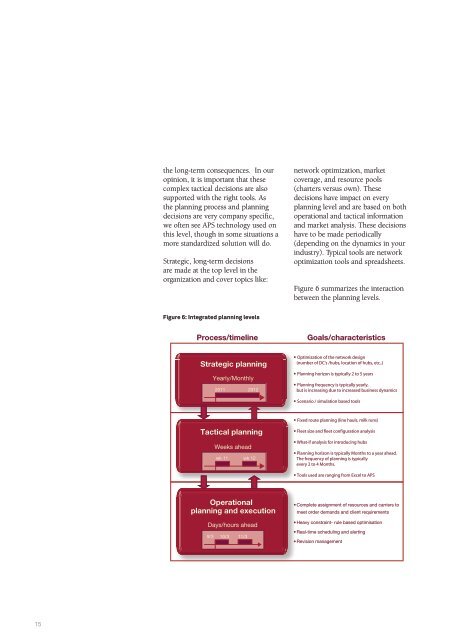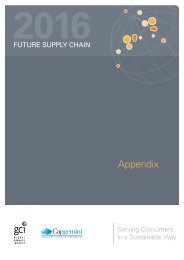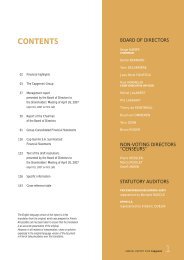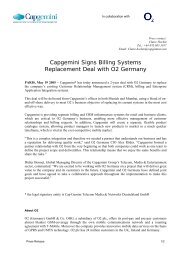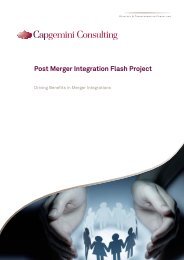Transportation Management Report 2011 - Capgemini
Transportation Management Report 2011 - Capgemini
Transportation Management Report 2011 - Capgemini
You also want an ePaper? Increase the reach of your titles
YUMPU automatically turns print PDFs into web optimized ePapers that Google loves.
15<br />
the long-term consequences. In our<br />
opinion, it is important that these<br />
complex tactical decisions are also<br />
supported with the right tools. As<br />
the planning process and planning<br />
decisions are very company specific,<br />
we often see APS technology used on<br />
this level, though in some situations a<br />
more standardized solution will do.<br />
Strategic, long-term decisions<br />
are made at the top level in the<br />
organization and cover topics like:<br />
Figure 6: Integrated planning levels<br />
Process/timeline<br />
Strategic planning<br />
Yearly/Monthly<br />
<strong>2011</strong> 2012<br />
Tactical planning<br />
Weeks ahead<br />
wk 11 wk 12<br />
Operational<br />
planning and execution<br />
Days/hours ahead<br />
9/3 10/3 11/3<br />
network optimization, market<br />
coverage, and resource pools<br />
(charters versus own). These<br />
decisions have impact on every<br />
planning level and are based on both<br />
operational and tactical information<br />
and market analysis. These decisions<br />
have to be made periodically<br />
(depending on the dynamics in your<br />
industry). Typical tools are network<br />
optimization tools and spreadsheets.<br />
Figure 6 summarizes the interaction<br />
between the planning levels.<br />
Goals/characteristics<br />
• Optimization of the network design<br />
(number of DC's /hubs, location of hubs, etc..)<br />
• Planning horizon is typically 2 to 5 years<br />
• Planning frequency is typically yearly,<br />
but is increasing due to increased business dynamics<br />
• Scenario / simulation based tools<br />
• Fixed route planning (line hauls, milk runs)<br />
• Fleet size and fleet configuration analysis<br />
• What-if analysis for introducing hubs<br />
• Planning horizon is typically Months to a year ahead.<br />
The frequency of planning is typically<br />
every 2 to 4 Months.<br />
• Tools used are ranging from Excel to APS<br />
• Complete assignment of resources and carriers to<br />
meet order demands and client requirements<br />
• Heavy constraint- rule based optimisation<br />
• Real-time scheduling and alerting<br />
• Revision management


